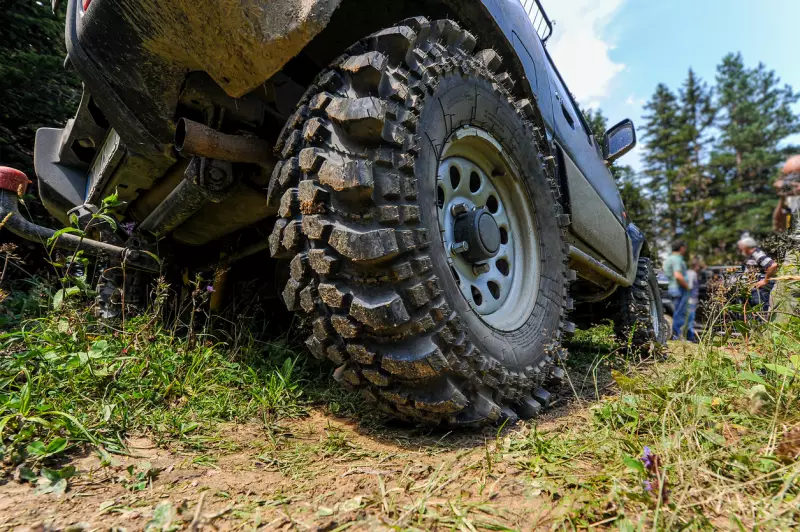
If you are in the market for a vehicle geared for adventures of all shapes and sizes or traveling through bad weather, there are two popular powertrain options available: all-wheel drive (AWD) and four-wheel drive (4WD). While both AWD and 4WD increase traction and handling, there are significant variations between the two systems that can impact how well they operate in different circumstances. To assist you in selecting the best choice for you, we will examine the distinctions between AWD and 4WD in this post.
AWD vs. 4WD: The Basics
The number of wheels driven by the powertrain is the main distinction between AWD and 4WD. A series of differentials and transfer cases in an AWD system delivers power to all four wheels at once. On all sorts of terrain, including dry pavement, gravel roads, and snow-covered ground, this enables more balanced and reliable handling. Usually, passenger vehicles, crossovers, and SUVs use AWD systems.
On the other hand, in off-road and heavy-duty applications, 4WD systems are specifically designed to deliver the most grip and torque to all four wheels. Unless the driver presses a button or lever to turn on the front wheels in a 4WD system, power is normally only sent to the rear wheels. While traveling at low speeds, such as when ascending steep slopes or traversing through muck or sand, this can offer more torque and pulling force. Heavy-duty vehicles such as SUVs, Pickup trucks frequently use 4WD systems.
AWD vs. 4WD: Pros and Cons
Depending on the intended application and road conditions, AWD and 4WD each have their own set of benefits and drawbacks. It is important to consider each of these carefully to decide which option will be the best fit to meet your individual needs:
Pros of AWD

- Better handling and traction on all types of terrain: AWD systems transmit power to all four wheels, improving handling and grip in a range of driving situations. This also improves traction on all sorts of landscapes.
- Improved safety and stability on slick and rainy roads: AWD systems can aid in stopping wheel slippage and sliding on slick or rainy roads, giving the driver and passengers more security and stability.
- Improved fuel economy: AWD vehicles typically offer better overall fuel efficiency, which is achieved by AWD systems' tendency to be lighter and more energy-efficient than 4WD systems.
- Better for passenger cars and crossovers: AWD systems are better for passenger vehicles and crossovers because they offer greater handling and safety on paved roads in severe weather. Many AWD systems have been specifically designed for use in passenger cars and crossover models.
Cons of AWD
- Reduced off-road capabilities: AWD systems may not have the torque or power to maneuver through difficult terrain or up steep inclines, making them less suitable for off-road driving than 4WD systems.
- Costly to fix and maintain: Compared to 2WD systems, AWD systems are more complicated and expensive to repair and maintain, needing specialized tools and knowledge.
Pros of 4WD

- Superior off-road capabilities: Exceptional off-road agility and traction is made possible by 4WD systems, which distribute the most grip and torque to all four wheels.
- Increased pulling power: 4WD systems can offer more torque and pulling power for carrying big objects or machinery.
- Durable and rugged: 4WD systems are made to endure hard usage and abuse, making them perfect for off-road driving and heavy-duty applications.
Cons of 4WD
- Poor fuel economy: 4WD systems are heavier and use more gasoline than AWD systems, which reduces their total fuel efficiency.
- Limited handling and grip on paved roads: As 4WD systems are primarily intended for off-road use, they might not offer the best handling and traction in bad weather on normal roadways.
- More difficult and costly to repair and maintain: Compared to 2WD or AWD systems, 4WD systems are typically harder and more expensive to fix and maintain. Many common maintenance tasks can often require specialist tools.
AWD vs. 4WD: Which One is Right for You?
Now comes the time to digest all this information and answer the big question. The final decision between AWD and 4WD comes down to your planned use and the road conditions. An AWD system could be the ideal option for you if you reside in a region with mild to moderate bad weather and want to use your car largely for commuting and sporadic road excursions. AWD systems improve handling and traction on all terrains and promote stability and safety on slick or rainy roads. AWD systems are lighter and use less gasoline than 4WD systems, improving total fuel efficiency.
A 4WD system would be a better option, though, if you want to perform a lot of off-road driving or heavy-duty hauling. All four wheels receive the greatest amount of grip and torque from 4WD systems, enhancing the vehicle's off-road capability and agility. Moreover, they offer more torque and pulling force for dragging machinery or towing big cargo. As a result of its weight and lower fuel efficiency compared to AWD systems, 4WD systems may not offer the best handling and grip on paved roads or in bad weather.
It's vital to remember that routine maintenance is necessary for both AWD and 4WD systems to guarantee maximum performance and lifetime. This entails routine fluid adjustments, tire rotations, and drivetrain component checks. Also, it's crucial to select tires that are the right type for your vehicle's drivetrain since improperly matched tires can harm the drivetrain and impair handling and grip.
GoodCar is Here to Help You Learn More About All Types of Vehicles
Your intended use and driving circumstances will determine whether you should choose AWD or 4WD. AWD systems are perfect for passenger vehicles and crossovers because they improve handling and traction on all sorts of terrain and promote safety and stability on wet or slick roads.
For off-road driving and heavy-duty hauling, 4WD systems offer the most traction and torque, making them perfect for pickup trucks, SUVs, and other heavy-duty vehicles. To guarantee optimum performance and lifespan, both systems need routine maintenance, and it's crucial to choose the right tires for your car's drivetrain system. If you have a specific vehicle in mind, run a vehicle history report on it so you can be sure you know everything about it before your purchase.
To find out more, reach out to the professionals here at GoodCar. We want to help you find the perfect vehicle for you!








![Best Sites to Check a Car’s History [2025 Review]](https://media.infopay.net/thumbnails/K8lMeG2QLjE46LPqZlmoi6SunKKdT5qvlaRZk6e1.webp)










![Best Sites to Check a Car’s History [2025 Review]](https://media.infopay.net/thumbnails/K8lMeG2QLjE46LPqZlmoi6SunKKdT5qvlaRZk6e1-w356.webp)
